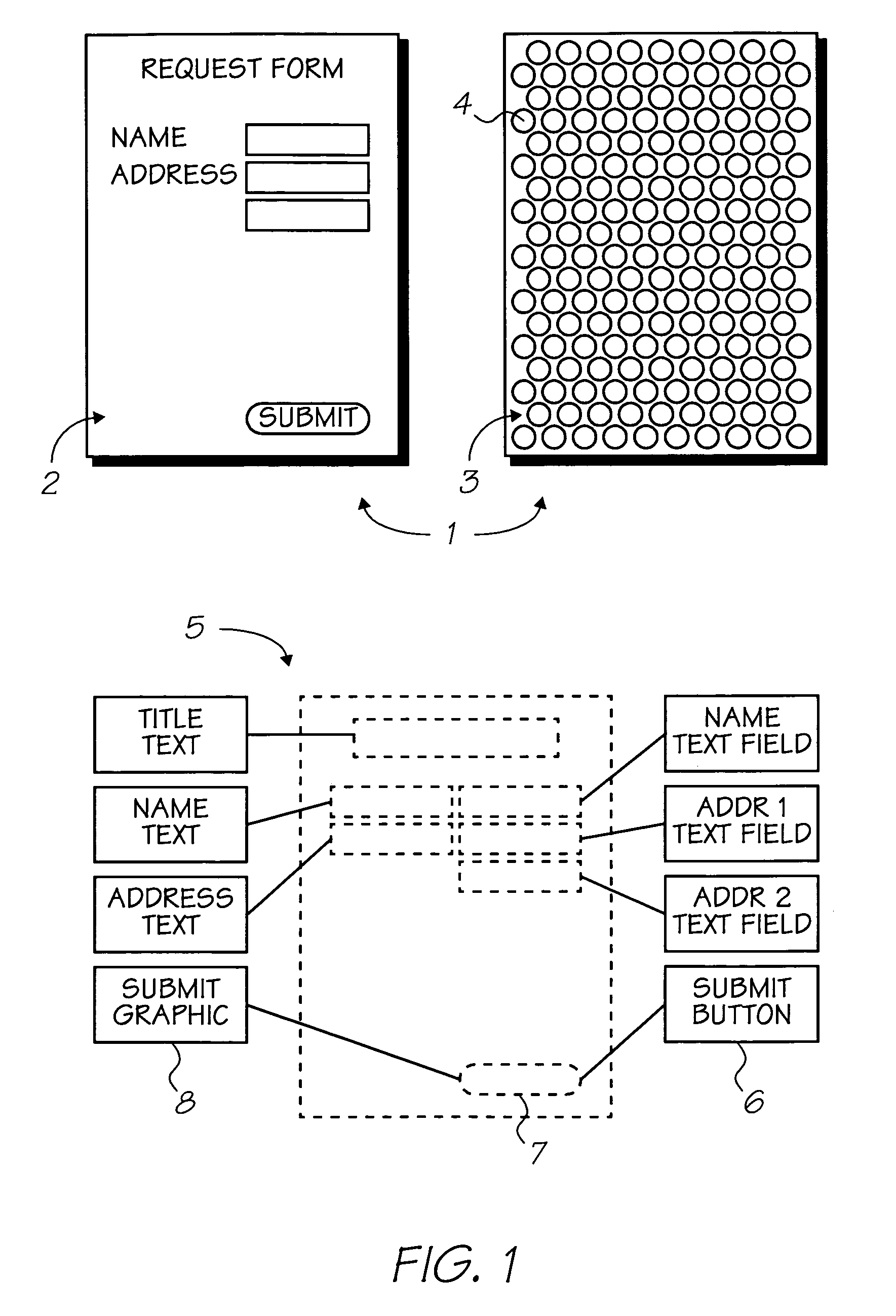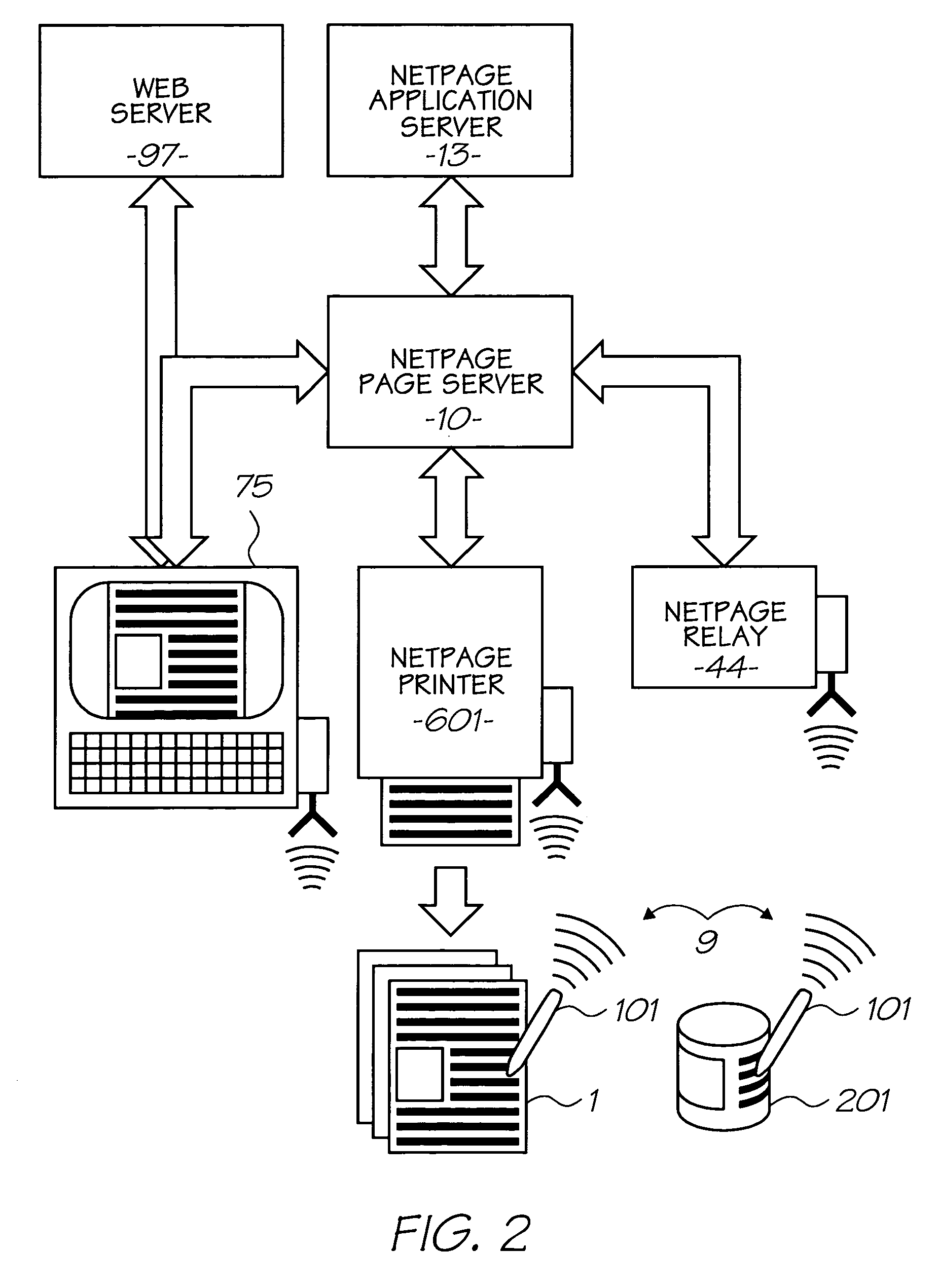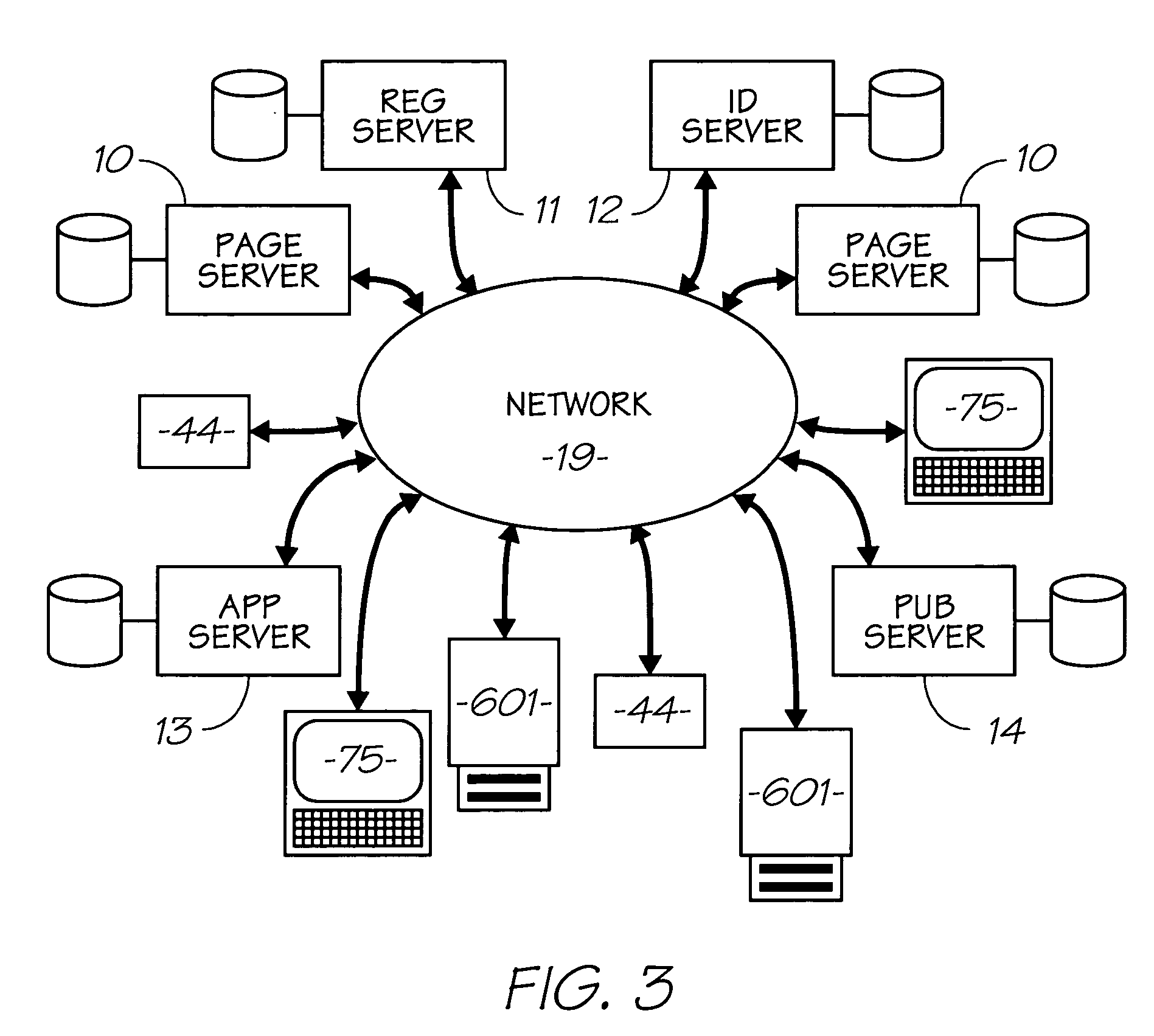Ink formulations comprising gallium naphthalocyanines
a gallium naphthalocyanine and pigment technology, applied in the field of infrared (ir) dyes, can solve the problems of not being formulated into ink compositions suitable for netpage, prior art dyes that cannot be used in netpage, and commercially available and/or prior art inks
- Summary
- Abstract
- Description
- Claims
- Application Information
AI Technical Summary
Benefits of technology
Problems solved by technology
Method used
Image
Examples
example 1
Preparation of hydroxygallium naphthalocyaninetetrasulfonic acid 4
[0357][0358](i) Gallium(III)chloride (5.70 g; 0.032 mol) was dissolved in anhydrous toluene (68 mL) under a slow stream of nitrogen and then the resulting solution was cooled in ice / water. Sodium methoxide (25% in methanol; 23.4 mL) was added slowly with stirring causing a thick white precipitate to form. Upon completion of the addition, the mixture was stirred at room temperature for 1 h and then naphthalene-2,3-dicarbonitrile (22.8 g; 0.128 mol) was added portionwise, followed by triethylene glycol monomethyl ether (65 mL). The thick slurry was distilled for 2 h to remove the methanol and toluene. Once the toluene had distilled off, the reaction mixture became homogeneous and less viscous and stirred readily. Heating was continued for 3 h at 190° C. (internal). The brown / black reaction mixture was cooled to 60° C., diluted with chloroform (150 mL), and filtered under gravity through a sintered glass funnel. The soli...
example 2
Preparation of Ammonium Salts
[0360]The following salts were prepared as described below.
[0361]
(a) Tetrapyridinium 5
[0362]Hydroxygallium naphthalocyaninetetrasulfonic acid 4 (189 mg; 0.17 mmol) was suspended in pyridine / water (50:50; 4 mL) and stirred at room temperature for 16 h during which time the reaction mixture became homogeneous. Ether / ethanol (86:14, 35 mL) was added to precipitate the salt and the supernatant liquid was decanted off before ether / ethanol (83:17, 12 mL) was added with stirring. The solid was filtered off and washed with ether / ethanol (50:50, 2×5 mL) and ether (2×5 mL). After drying under high vacuum, the tetrapyridinium salt 5 was obtained as a green powder (136 mg; 56%). 1H NMR (d6-DMSO) δ 7.78 (8H, dd, J=6.3, 6.3 Hz, H3′, H5′); 7.97, 8.00 (4H, dd, J7,8=J7,6=7.2 Hz, H7); 8.25 (4H, dd, J=7.8, 7.8 Hz, H4′); 8.49 (4H, dd, J8,7=7.2, J8,7=5.7 Hz, H8); 8.80 (8H, d, J=7.8 Hz, H2′, H6′); 8.84, 8.98 (4H, d, J6,7=7.2 Hz, H6); 10.10, 10.19, 10.25 (4H, d, J1,8=5.7 Hz, H...
example 3
Preparation of Inks and Reflectance Spectra of Ammonium Salts
[0366]A solution of each salt was made up in an ink vehicle according to Table 1.
[0367]
TABLE 1Composition of dyeless ink vehicles for salt derivativesVehicle AVehicle Bcomponent(% w / v)(% w / v)Vehicle C (% w / v)Ethylene glycol65.455.45Diethylene glycol21.821.822-pyrrolidinone54.554.55Glycerol4.54.094.09Urea76.366.36Surfynol (5EO / OH)0.50.450.451,3-propanediol—9.00—ethanol——9.00Water7568.1868.18
[0368]The resulting clear green solutions were printed on Celcast matt photoquality inkjet paper (143 gsm) on an Epson C61 inkjet printer and then the reflectance spectra were measured on a Cary 5 UV-vis spectrophotometer. Results are given in Table 2.
[0369]
TABLE 2Relationship between amine component of tetrasulfonate salts, pH of ink madeaccording to Table 1, and position of Q-bandInk vehicleQ-bandExampleCompound(concentration, mM)Amine (B)Amine:4pKapH(λmax)4C (2)none——2.8805nm3(a)5B (1.36)Pyridine4:15.24.6807nm3(d)7B (1.5)Imidazole4:16...
PUM
| Property | Measurement | Unit |
|---|---|---|
| pKa | aaaaa | aaaaa |
| pKa | aaaaa | aaaaa |
| PKa | aaaaa | aaaaa |
Abstract
Description
Claims
Application Information
 Login to View More
Login to View More - R&D
- Intellectual Property
- Life Sciences
- Materials
- Tech Scout
- Unparalleled Data Quality
- Higher Quality Content
- 60% Fewer Hallucinations
Browse by: Latest US Patents, China's latest patents, Technical Efficacy Thesaurus, Application Domain, Technology Topic, Popular Technical Reports.
© 2025 PatSnap. All rights reserved.Legal|Privacy policy|Modern Slavery Act Transparency Statement|Sitemap|About US| Contact US: help@patsnap.com



